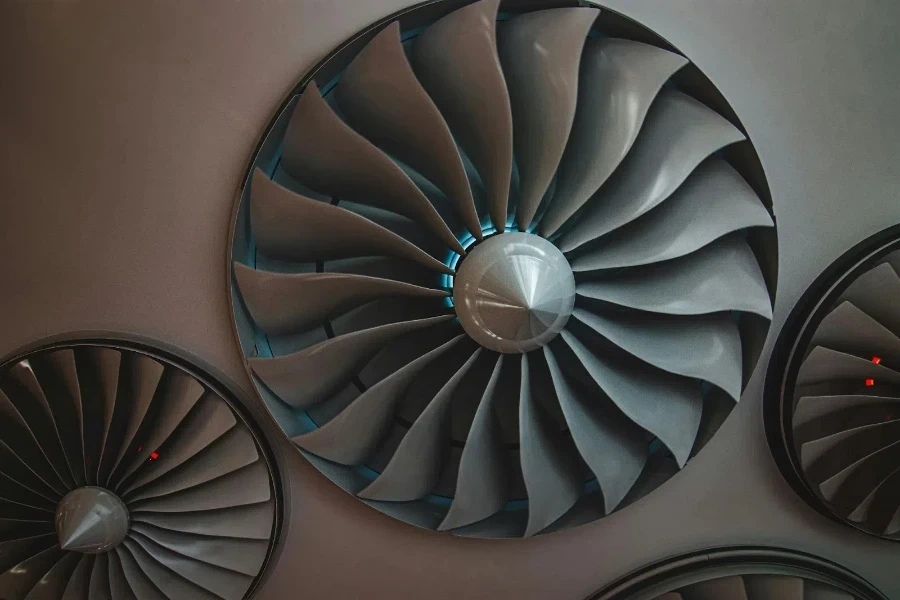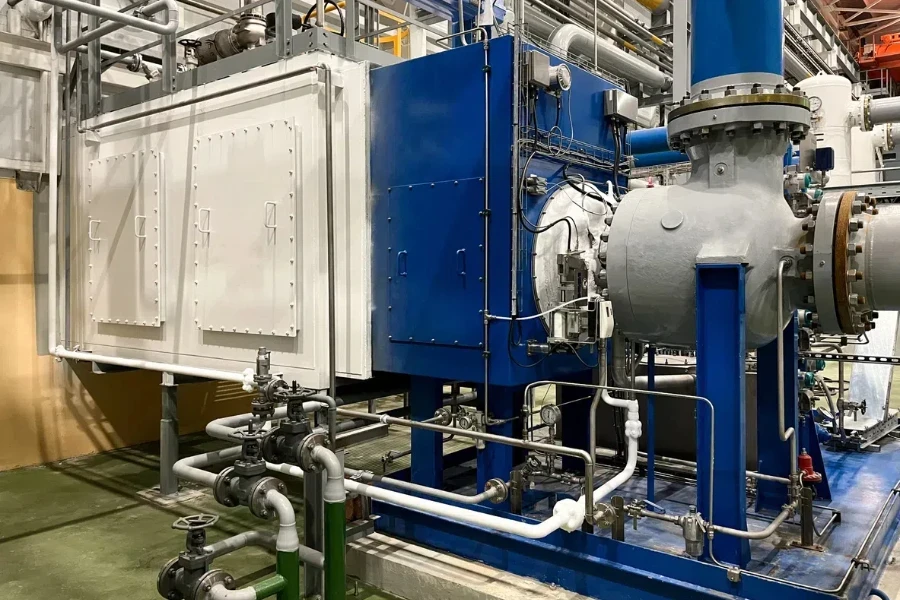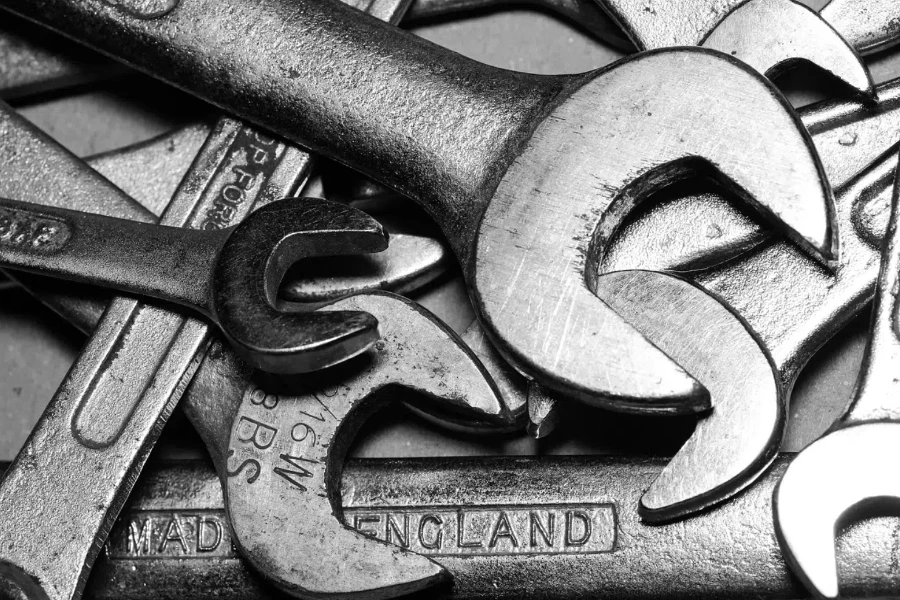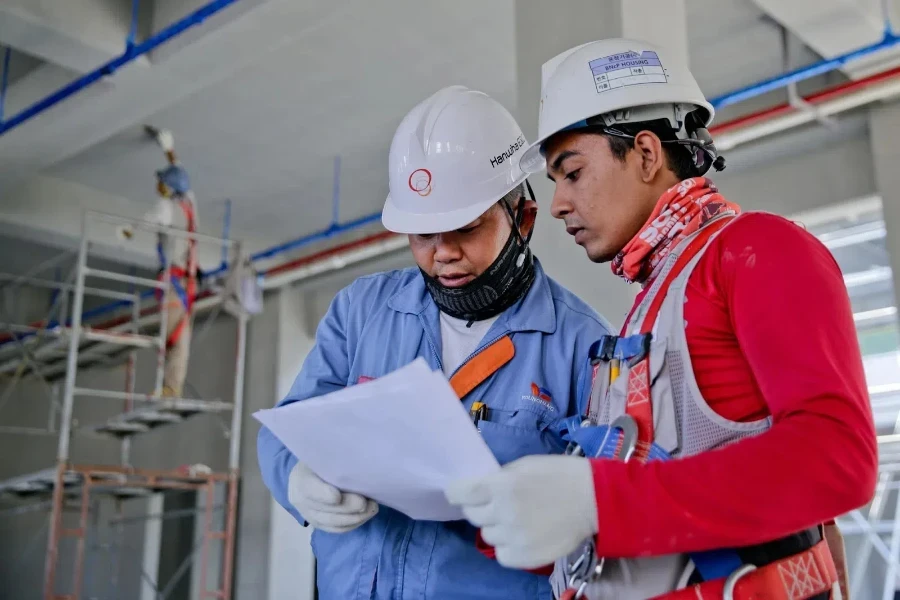Turboexpanders are specialized pieces of equipment able to extract kinetic energy from waste gas via high-speed rotation. This provider of green energy is at the forefront of the green revolution and could be used to a much larger extent in the future. The turboexpander market is expected to grow from USD 1032.28 million in 2024 to USD 1,404.1 million by 2032, at a compound annual growth rate of 3.92%.
Read on to discover everything you need to know about turboexpanders including why they could be a highly profitable investment in 2025.
Table of Contents
What is a turboexpander?
What applications and industries are turboexpanders used in?
How do turboexpanders work?
Types of turboexpanders
Considerations when buying a turboexpander
What factors can affect a turboexpander’s performance?
Safety considerations
Innovation and future trends for turboexpanders
Conclusion
What is a turboexpander?
Turboexpanders are high-speed rotating machines with an expansion turbine that can recover energy from pressurized gas streams. They rotate at such a speed as to force the pressurized gas to expand and cool, separating various components and creating energy that can then be used for cooling or powering equipment.
What applications and industries are turboexpanders used in?
Their ability to cool temperatures and recover energy makes turboexpanders very useful in many industries, including:
- Natural gas processing: Turboexpanders are used in the production of liquified natural gas (LNG) and to separate gasses.
- Petrochemical industries: Turboexpanders are used in helping to separate hydrocarbons and to improve process efficiencies.
- Power generation: Turboexpanders can help recover energy from waste gas streams, which can then be used to power other equipment, such as a generator or compressor.
- Cryogenic applications: Turboexpanders lower the temperature of the gas to facilitate extremely low-temperature processes.
- Oil and gas: Turboexpanders are employed in gas recovery systems, pressure reduction, and energy-efficient power generation.
How do turboexpanders work?

Turboexpanders allow high-pressure gas to rotate and expand in the expansion turbine, which reduces the temperature and pressure of the gas. This allows the turboexpander to extract kinetic energy from the gas, which is then converted to mechanical energy able to power and drive machinery and equipment. The key advantage of a turboexpander is that it allows for the use of energy that would otherwise be lost in gas waste. In addition, contrary to traditional expansion valves or throttling, turboexpanders recover as opposed to dissipate the heat, making them perfect for energy conservation and efficiency.
Key components of a turboexpander
- Turbine wheel: The rotational component that extracts the energy from the gas.
- Shaft: The component that transfers newly converted mechanical energy from the turbine to the equipment to be driven.
- Bearings: The components that support the rotating shaft, allowing for a smooth operation.
- Nozzles: The gas directors that conduct the flow into the turbine.
- Diffuser: The component that reduces the gas pressure and speed following the energy extraction process.
Types of turboexpanders
There are two main turboexpander types, both with their own specifics.
1. Radial turboexpanders
Radial turboexpanders have a radial flow path, allowing the gas to enter the center of the turbine before moving outward. This design is highly efficient for medium to high-pressure ratios — a range of gas flows that makes it commonly used in natural gas processing, cryogenic refrigeration, and petrochemical separation.
2. Axial turboexpanders
An axial turboexpander has a type of axial-flow turbine design, meaning the gas flows parallel to the axis of the turbine, which makes it well-suited to applications requiring high flow rates and lower pressure ratios. This makes them effective for large-scale industrial processes, such as in LNG production and air separation plants.
Considerations when buying a turboexpander

Before buying a turboexpander, it’s important to do some research. As well as knowing which type of turboexpander to buy, some of the main considerations include:
Construction materials
Turboexpanders should be made with high-strength alloys in order to withstand the rotation speeds, freezing temperatures, the corrosive qualities found in some gasses, and the high-intensity and high-pressure processes. Some effective materials include stainless steel, nickel alloys, and titanium.
Manufacturing process
This is where buying from a trusted manufacturer is important. Turboexpanders must be manufactured with precise engineering techniques to create exact specifications and balanced and aligned rotating parts for safe, high-speed rotation. Ensure that strict quality checks have been carried out before choosing to purchase a turboexpander.
Design choices
The design of a turboexpander must consider a few key factors, such as operational pressure, temperature, and gas composition, as well as mechanical load, environment, and efficiency.
Quality control
Turboexpanders must meet the industry standards for safety and efficiency. This means they should undergo a series of comprehensive quality checks, including testing the performance and pressure resistance of the machine, as well as the integrity of the manufacturing material. Finally, checks must be made to ensure the turboexpander will perform efficiently and without failure under extreme conditions.
What factors can affect a turboexpander’s performance?

A turboexpander’s performance can be measured using a series of efficiency metrics, including measuring the ratio of mechanical energy output to the energy available in the pressurized gas. If the metrics are poor, it could be down to a few key factors.
Proper installation
Installing a turboexpander correctly and in a proper place will not only help ensure proper performance, but it will also help the longevity of the machine. The turboexpander should be set up properly, with all its components aligned. It should also be seamlessly integrated with the existing systems and placed in a well-ventilated area.
Operational practices
To avoid any issues and ensure smooth performance, it is important to follow the manufacturer’s recommendations when using the turboexpander, including monitoring gas flow rates, pressure levels, and mechanical performance. In addition, users should perform regular checks.
Maintenance practices
As with any machine or piece of equipment, maintenance is key for a continuous, optimal performance. For a turboexpander, this means checking the bearings, cleaning the nozzles, inspecting turbine blades for wear, aligning the rotating components, and ensuring that the machine and its parts are kept well lubricated. Carrying out these regular services is one of the key solutions to risk as it will reduce the likelihood of common issues, gas leaks, or operational failure.
Operational conditions
In order to maintain an optimal turboexpander performance, the gas temperature, pressure, and flow rate must stay at the desired levels. If these operating conditions deviate, they can negatively impact energy recovery efficiency.
Design parameters
The shape and size of the turbine and its blades can have a significant effect on performance — this is where precision engineering is key.
Safety considerations

Despite turboexpanders being largely automated, there are still some key safety considerations to consider.
Common risks
Due to the turboexpanders operating under high pressure and at a very low temperature, some of the common risks involved with the machine can be critical. Some of the main risks include gas leaks, pressure buildup, and equipment failure.
Mitigation strategies
Proper installation, maintenance, and operation are essential to mitigate risk. In addition, however, operators should implement pressure relief systems and introduce automated shutdowns and monitoring tools to ensure 24/7 monitoring and safety procedures.
Innovation and future trends for turboexpanders

As turboexpanders deal with waste reduction and energy generation, they are a key technology for future green projects. Currently, various advances are being made to optimize their processes.
Advances in turboexpander technology
When looking at the physical technology, such as manufacturing materials, innovation is being found in creating more resistant and durable materials able to withstand increasingly extreme temperatures and pressure. In terms of precision engineering design, changes are being made by considering aerodynamics to improve the efficiency of the energy extraction in the expansion turbine.
Integration with renewable energy systems
Turboexpanders are increasingly being integrated into renewable energy systems where they can help recover energy from steam and other gasses produced during the energy-generation processes. One example is their use in geothermal power plants, however, they may begin to appear in other industries too.
Predictive maintenance and AI applications
AI and smart technology is being integrated into all aspects of power generation and technology, and turboexpanders are not an exception. One way this technology has surfaced is in its ability to create a safer environment, with remote, real-time monitoring, and automated shut-offs. Increased automation will also begin to take hold, meaning reduced operational costs and human error, and improved safety.
Conclusion
Turboexpanders are vital components for the recovery of energy in high-pressure gas applications. Their robust and efficient design streamline the process of extracting kinetic energy from waste gas, converting that energy into mechanical energy, and transporting it directly to the machines and equipment that need it to run.
Turboexpanders are a green energy producer and their ability to be integrated into other renewable energy systems makes them important for the ongoing green revolution. As we see further advances in smart technology and AI, turboexpanders will continue to evolve and form part of the green future.



